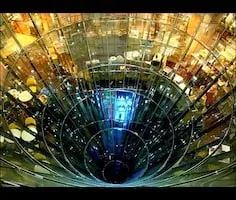In 1994, Amazon.com founder Jeff Bezos read a statistic that the Internet had been growing at 2300 percent annually. He fashioned that changing tide into a business plan that has been breaking barriers across supply chain and e-commerce that has left an indelible mark with the Amazon effect.
Beginning with booksellers, the e-commerce giant has expedited the closure of many retailers and threatens to redefine the standards of shopping in a digital world. Retailers are forced to lower prices, optimize their systems and processes, and reduce profit margins in favor of competition; meanwhile, Amazon continues its trek toward dominance.
First coined in 2012 by Steve Weinberg, this is the Amazon Effect. Following the 2006 book by Charles Fisherman called “The Walmart Effect,” the Amazon Effect is a story of an Entrepreneur and his execution of an idea.

That execution of that idea is changing consumer habits and raising the bar for sellers. Let’s take a closer look at the parallels between the Walmart Effect and the Amazon Effect and explore the implications for the future of online and brick-and-mortar shopping.
What Is the Walmart Effect?
According to the 2006 book, The Walmart effect begins with the idea of offering consumers the lowest possible price to acquire goods by leveraging large-scale purchasing power and a culture focused on cost-cutting.
Entrepreneurs and small business owners face such tremendous pressure than many of them end up insolvent. Decreased sales from price and convenience competition causes many retailers to close their doors.
What is the Amazon Effect?
The Amazon Effect has come to mean a few things.
First, consumers are offered something so compelling that they shift their buying habits, which results in a reduction of sales for retailers. Retailers respond by adjusting their sales strategies to meet the needs of the altered consumers.
Unwinding overbuilt brick-and-mortar stores, enhancing the customer experience, and updating fulfillment networks and systems are slow and expensive endeavors. Retailers that are slow to respond are forced into bankruptcy. The consumer experience is relatively un-phased as shopping options remain abundant.
Is the Amazon Effect the New Walmart Effect?
Amazon offers several ways for third-party sellers to compete, but has the advantage of configuring the rules in a way in which Amazon (the business) always wins.
While third-party sellers on Amazon have wide control over pricing, it may be difficult to move more products when Amazon can achieve the same process at lower profit margins. The game has changed and retailers, manufacturers, and sellers must respond quickly or face extinction.
In essence, the Amazon Effect has become the New Walmart Effect.
What Does the Amazon Effect Mean for Retailers, Entrepreneurs and Small-Business Owners?
In the recent book “The Amazon Marketplace Dilemma: A Brand Executive’s Challenge Growing Sales and Maintaining Control,” authors James Thomson and Joseph Hansen study dozens of strategic considerations that a brand company must evaluate in developing and implementing the right Amazon strategy.
They state that the five pillars to a foundation of strength on Amazon are: Branding, Distribution, Pricing, Product Availability, and Catalog Selection. In June of 2017, sports apparel giant Nike announced that they will be selling their products directly on Amazon.com in order to improve the Nike consumer experience. Previously, Nike products were only available on Amazon via third-party sellers.
The same tactics used to overcome the pitfalls of the Walmart Effect, like focusing on local selling strategies, listening to consumers, and offering more than just a single product/service, can safeguard small-business owners and retailers against this threat.
Take Advantage of Lessons From the Past to Safeguard Against the Growing Power of Amazon
Amazon bears many similarities to the rise of Walmart, but it is possible to stay competitive with the online behemoth. Protect your assets by integrating systems and driving your supply chain costs down.

